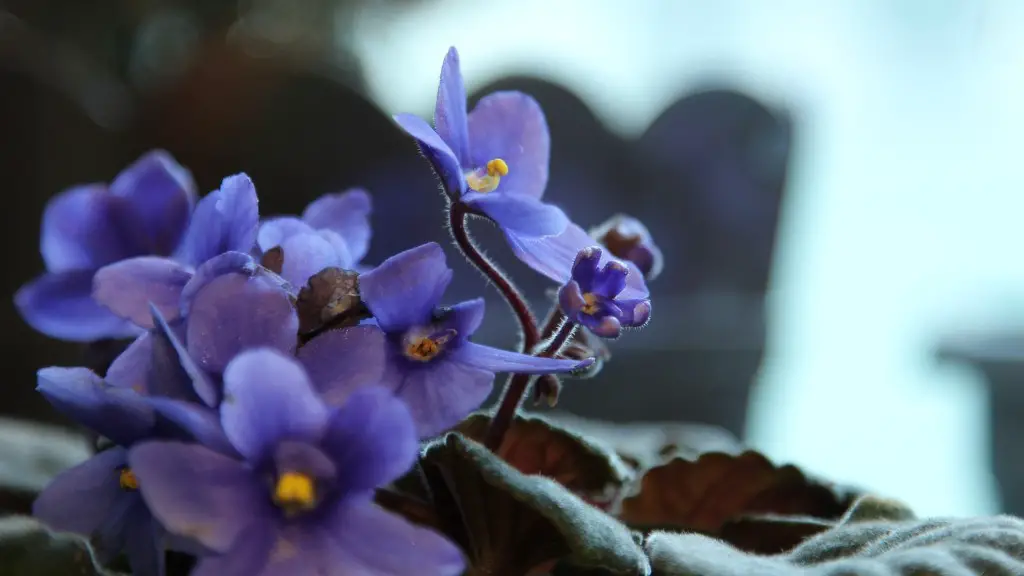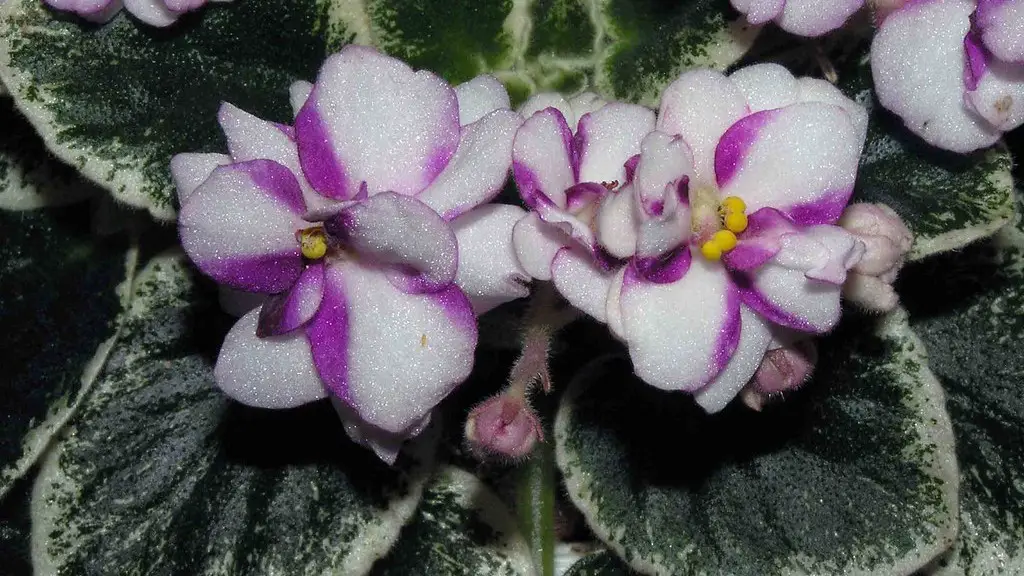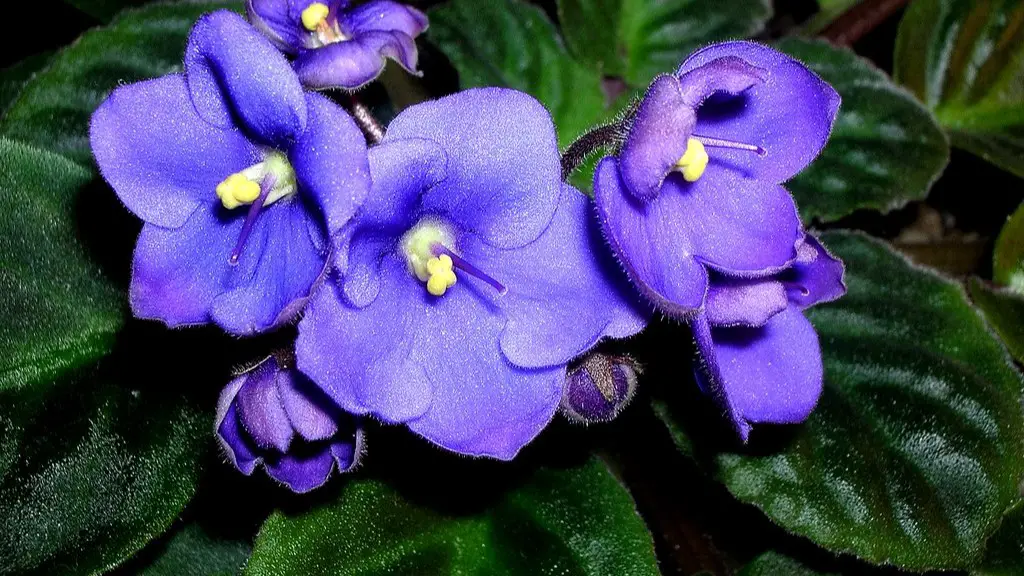African violets are a popular type of houseplant. They are known for their beautiful flowers, which come in a variety of colors. African violets are relatively easy to care for, and they make a great addition to any home. One of the most important things to remember when caring for African violets is that they like sunlight.
African violets require bright, indirect sunlight to thrive. They should be placed near a window where they will receive several hours of sunlight each day, but out of direct sunlight, which can scorch their leaves.
Where is the best place to put an African violet?
If you want your plants to have the best color and blooms, grow them in bright, indirect light. A plant stand three feet away from a west- or south-facing window is an ideal location. Plants will still grow when situated right beside north- or east-facing windows, but leaves will be thin and spindly, and plants less likely to bloom.
Wicking systems are an easy and efficient way to water your African violets. All you need is a container with a wick, some water, and a way to keep the container elevated above the soil. The wick will draw water up from the container and into the soil, watering the plant as needed. You can water the container once a week and allow the plant to dry out completely between waterings. This system is great for African violets because they are susceptible to root rot and need well-drained soil.
How many hours of light do African violets need
A fluorescent light fixture suspended 8 to 10 inches above plants and left on for 12 to 16 hours per day should provide sufficient light for African violets.
African violets need plenty of sunlight, but only indirect sunlight. If violets get more than this, they will begin to show signs of scorching on the leaves and flowers. In some cases, too much sunlight will turn variegated leaf varieties entirely green.
Should African violets be watered from the top or bottom?
If you water your African violet from the top, be sure to avoid getting water on the leaves when the plant is in the sun. This is to avoid leaf spots. Watering from the bottom is also fine, just be sure to use lukewarm or warm water, as cold water can damage the plant.
African violets do best when they are slightly pot-bound, so choose a pot that’s on the smaller side. A professional tip is to choose a pot that is 3-4 inches in diameter for a standard African violet plant. This will help the plant to thrive and produce more flowers.
Should African violets be misted?
It is important to water African violets carefully so that the crown of the plant does not become saturated with water, which can cause crown rot. Do not mist the foliage, as this can cause permanent leaf spotting. Use room-temperature water.
Pothos plants prefer bright, indirect sun. Too little sunlight can cause the plant to stretch for the light and produce few or no flowers, while too much sun can burn the leaves. An east-facing window is ideal, especially with a sheer curtain to block the sun’s harshest rays. The plant also needs eight hours of darkness every night.
Can I water African violets with tap water
It is important to be aware of the quality of your tap water when growing African violets. Chlorine levels can fluctuate depending on the season and in some areas tap water may have high amounts of chlorine, chloramines, or dissolved solids. All of these things can adversely affect your African violets. If you are concerned about the quality of your tap water, you may want to consider using filtered or distilled water to avoid any potential problems.
It’s important to keep the soil around your plant’s roots moist, but not waterlogged. Allow the top layer of soil to dry out in between watering. This will encourage your plant to put energy into blooming.
Water from the bottom by placing the plastic grower’s pot in a tray or saucer of room temperature water. Allow the plant to absorb the water for no more than 30 minutes.
Why do you water African violets from the bottom?
Keeping the roots of your African violet moderately moist is key to keeping your plant healthy. You can water from the bottom, letting the plant soak up the water for an hour or so. This will help to keep the water out of the crown of the plant, which can lead to crown rot. African violets like warmer water, around 70 degrees.
African Violet plants are quite easy to take care of and only need to be watered about once a week. When watering, it is important to make sure that the bottom of the pot is submerged in water for at least 20 minutes. This will allow the plant to absorb the water and the top soil to become moist.
How often should you feed African violets
African violets need fertilizer to stay healthy throughout the year. spring and summer is the best time to fertilize them once every 14 days. However, in the fall and winter you should not fertilize the plant at all to prevent over-fertilizing.
If you’re growing African violets, you’ll usually only need to water them once a week. However, this can vary depending on conditions like the temperature and the season. The best way to water African violets is by bottom watering. This means that you should water them from the bottom of the pot, rather than from the top.
What do Overwatered African violets look like?
If you think your African Violet plant has been over-watered, check the soil to see if it retains too much water. This retention of water can cause the leaves and/or leaf stems to turn soft, limp or mushy. If this is the case, you may need to water your plant less often or use a pot with better drainage.
Using a terra cotta pot for your African violet is ideal because the porous material allows the roots to breath better and prevents the soil from staying too wet. African Violet roots don’t go very deep; they like to go sideways, so don’t use a deep pot. Your pot must have suitable drainage holes so you can water from underneath.
Final Words
African violets come from a tropical region of Africa and so they like bright sunlight. They will do best if they are in a room that gets a lot of sunlight, but they can also do well with artificial light.
In conclusion, African violets like sunlight but they need to be acclimated to it gradually so that they don’t get sunburned. Start by giving them an hour or two of direct sunlight each day and then increase the amount of time they are in direct sunlight by an hour each week. Once they are used to being in direct sunlight, they can be in it for as long as six hours a day.




